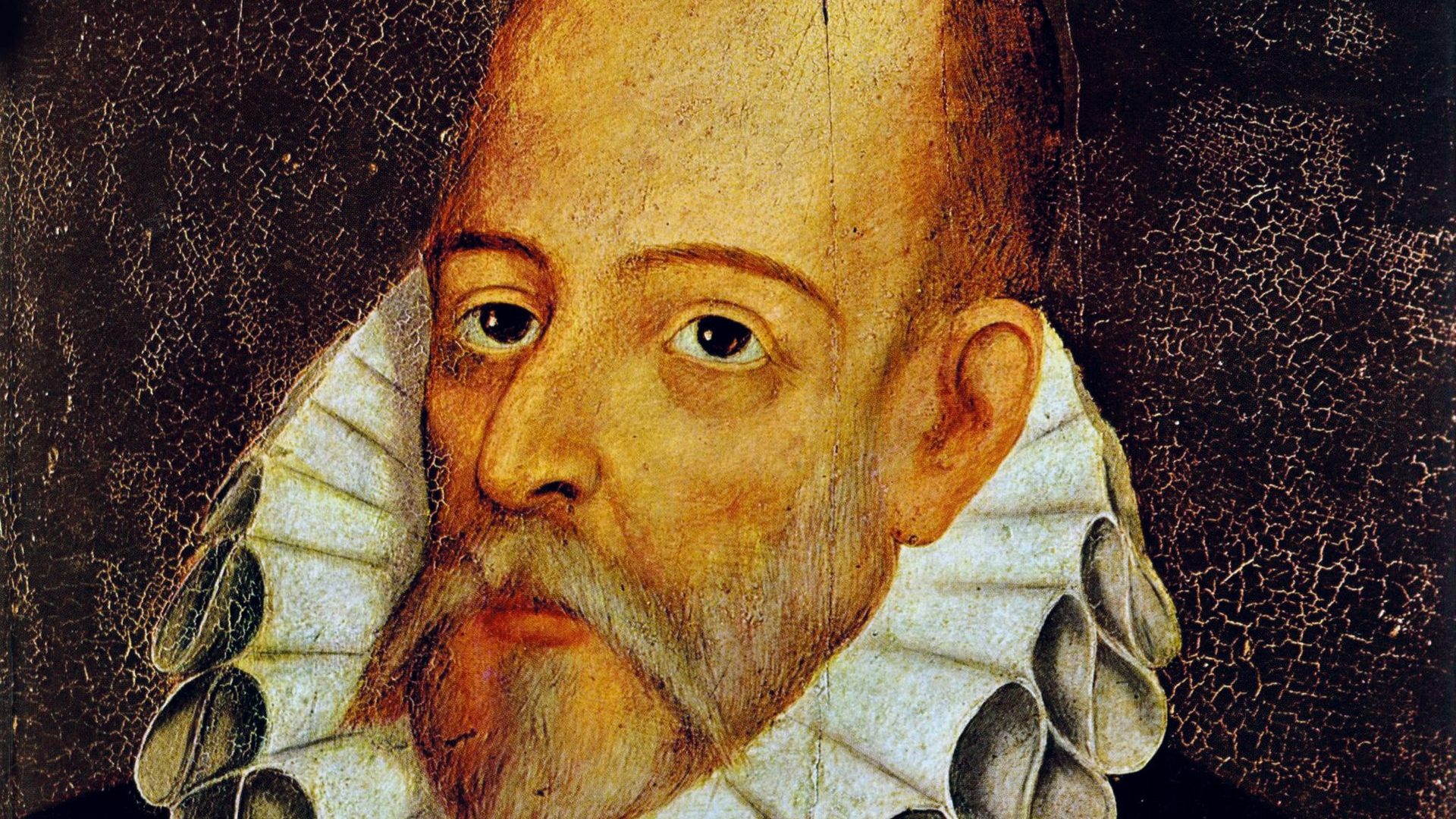In April 2014 a team of historians and archaeologists arrived at a small convent in central Madrid with high hopes of finding the bones of the Don Quixote author Miguel de Cervantes. The last confirmed sighting of his remains had been in 1673, 57 years after his death, when building work had
necessitated their temporary removal. When he was reinterred shortly afterwards, no record was kept of his precise location.
There was great excitement among the group setting up at the Convent of the Barefoot Trinitarians that spring. They’d followed the recent car park exhumation of the English King Richard III closely and were confident that once they had located the remains of Spain’s greatest writer, they too would be able to reconstruct his face in time for the 400th anniversary of his death in 2016.
It took more than six months of searching using infra-red scanners and ground-penetrating radar, but eventually a small wooden casket was located in one of the 33 sealed alcoves in the walls of the crypt – a casket inscribed with the letters “MC”.
Inside, the team found not one complete skeleton but the bones of several people mixed together, from which it was impossible to determine which belonged to the author. There was nothing new to add to the scant details of Cervantes’s life and there would be no facial reconstruction.
“The remains are in a bad state of conservation and do not allow us to do an individual identification of Miguel de Cervantes,” sighed forensic scientist Almudena García-Rubio. “But we are sure this confirms what the historical
sources say and this is the burial of Miguel de Cervantes.”
Cervantes, even in death, even inside his own monogrammed funeral casket, would remain for ever elusive and enigmatic.
He left no diaries, no letters and very few documented sources. No contemporary likeness survives him. The only physical description we have
comes from the prologue of his Novelas Ejemplares (Exemplary Stories), published three years before his death. Cervantes was, it reads, “of aquiline
countenance, with dark brown hair, smooth clear brow, merry eyes and hooked but well-proportioned nose; his beard is silver though it was gold not 20 years ago; large moustache, small mouth with teeth neither big nor little, since he has only six of them and they are in bad condition and worse positioned, for they do not correspond to each other; the body between two extremes, neither tall nor short; a bright complexion, more pale than dark, somewhat heavy in the shoulder and not very light of foot”.
The documents that remain give an outline of his life and times, but it’s in his writing that Cervantes lives, and lives vividly. We will never see his face,
but we will always be privy to his remarkable imagination, most notably in the pages of his greatest creation, Don Quixote. Credited by many as being the world’s first novel, Cervantes’s tale of the adventures of a minor noble and his squire, Sancho Panza, travelling through Spain fantasising escapades as a courtly knight, poking fun at the worthy chivalrous romances of the day,
is not only its author’s finest work, it stands up as one of the greatest works in European literature. Yet while the book made his name in certain circles, Don Quixote didn’t make its author rich. In fact, back then at the dawn of book publishing, his masterpiece made Cervantes barely a penny.
It was almost as if Cervantes was predestined never to make his fortune. His grandfather, who worked for the Inquisition as a fiscal lawyer, had become very wealthy by the time he ran off with his mistress and left the family penniless. Cervantes’s father, Rodrigo, the eldest and hence the one on whom responsibility chiefly fell, became a surgeon, a profession not nearly as lucrative then as it is today. Penury and debt meant the family was always on the move until finally they settled long enough in Madrid for Miguel to receive a rudimentary education.
In 1569, in his early 20s, Cervantes left Madrid in a hurry, most likely because of an arrest warrant issued in his name following a duel, and along with his brother, Rodrigo, he took a commission as a soldier fighting for the Holy League in the Ottoman-Venetian war of the early 1570s. At the Battle of
Lepanto in the Mediterranean in 1571 Cervantes was badly injured, shot twice in the chest and wounded in his left hand so badly it was practically useless for the rest of his life.
Despite his injuries, which required lengthy treatment, he remained a soldier until 1575 but, having been paid off and sailing home to Spain, he and Rodrigo were captured by Ottoman corsairs, held for ransom in Algiers and used as slave labour. It took until 1577 for the family to raise the ransom for Rodrigo, but it would be another three years before Cervantes was released, despite repeated attempts to escape.
It was on his return to Spain after a decade of soldiering and captivity that he seems to have picked up his pen in earnest. His first serious work, a pastoral called La Galatea, appeared in 1585, but he was also earning fees writing sonnets as introductions to books, including a medical textbook on kidney diseases.
Unable to make a living solely as a writer, Cervantes spent most of the rest of his life on the move, going to wherever there was work. In 1588 he was employed sourcing supplies for the ill-fated Armada, travelling the countryside of Andalucía requisitioning corn and oil, the kind of job where nobody is ever pleased to see you. If that wasn’t bad enough, he then became a tax collector.
There are records from this time of periods spent in prison, possibly for debt, but all the while he appears to have been working away diligently on Don Quixote, channelling his own travels and adventures into the wanderings of his amiable hero, writing in the language of the everyday, of the people.
A second part was published in 1615, a volume more complex and less overtly satirical than the first, as Cervantes finally settled in Madrid for the last decade of his life, close to the convent where he would be buried. Able at last to devote more time to his craft, Novelas Ejemplares appeared during this period, as did Viaje del Parnaso (Voyage to Parnassus) and Los trabajos de Persiles y Sigismunda (The Trials of Persiles and Sigismunda), the latter regarded by Cervantes as his masterpiece, completed shortly before his death, published posthumously but little read today.
We can only speculate, but in these final years in the twilight of his life it seems Cervantes was, after many miles travelled, wounds sustained and years endured, finally settled and fulfilled.
The box of bones containing his remains was reinterred in June 2015 beneath a new memorial accompanied by a glowing eulogy from the mayor of Madrid. Inscribed on the memorial tablet is a line from the prologue that
preceded Persiles, some of the last words Cervantes ever wrote.
“Time is brief, anxieties grow, hopes diminish,” it read, “and with this, I carry out my life with my desire to live.”




